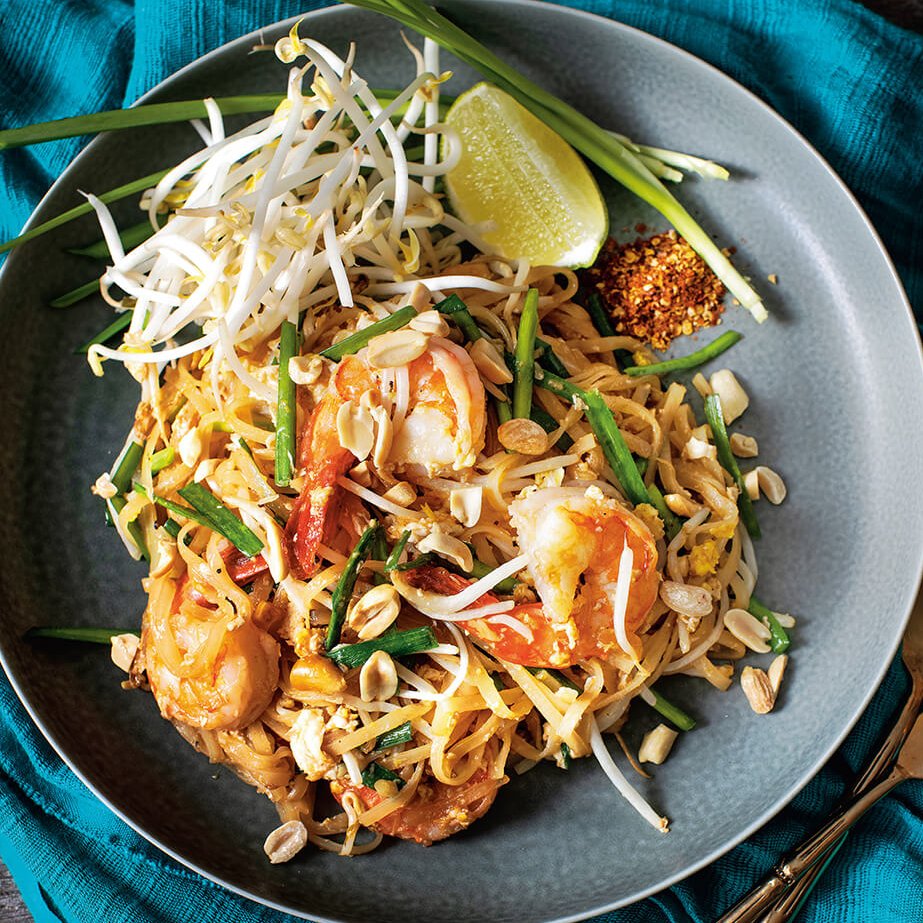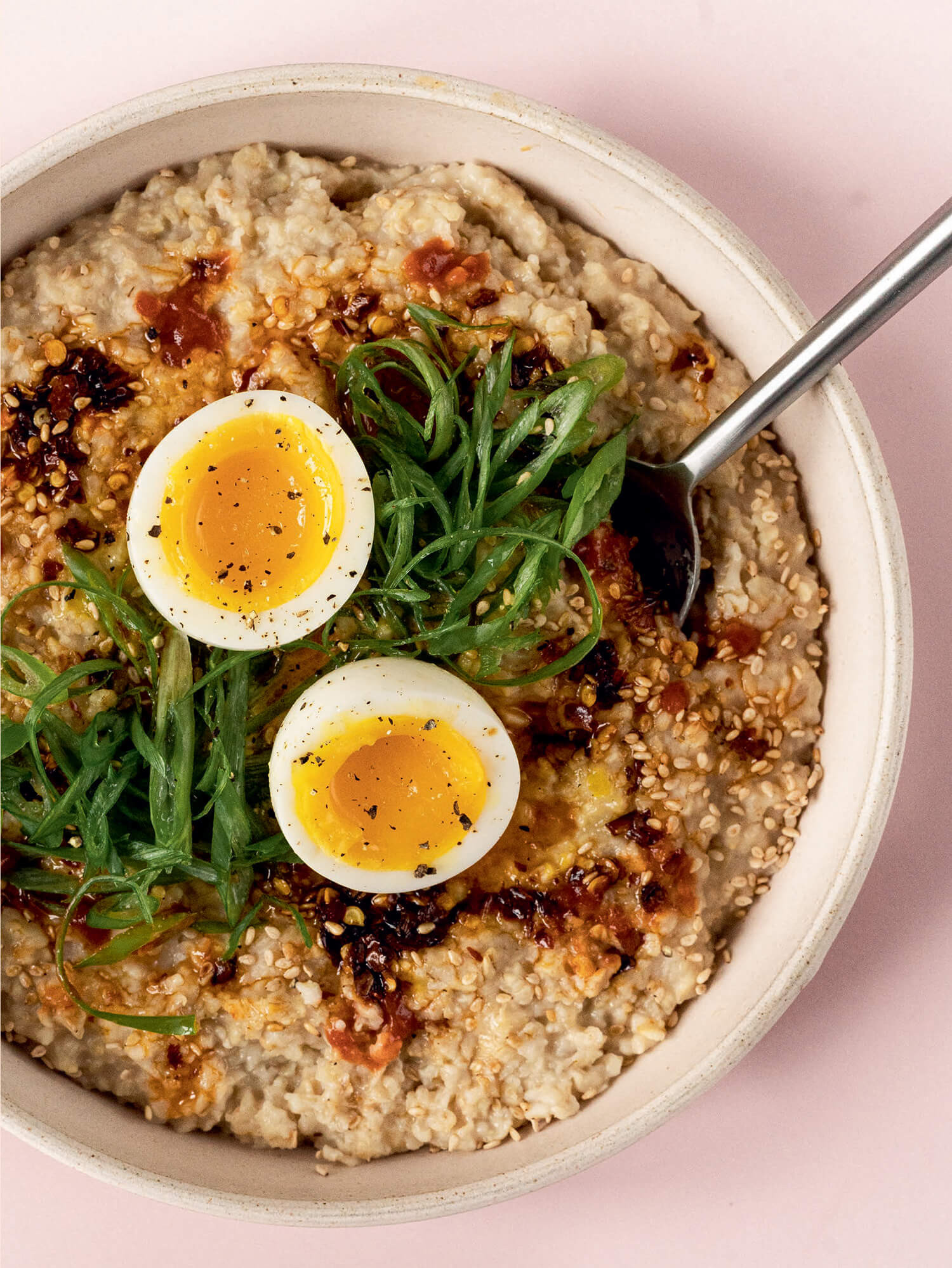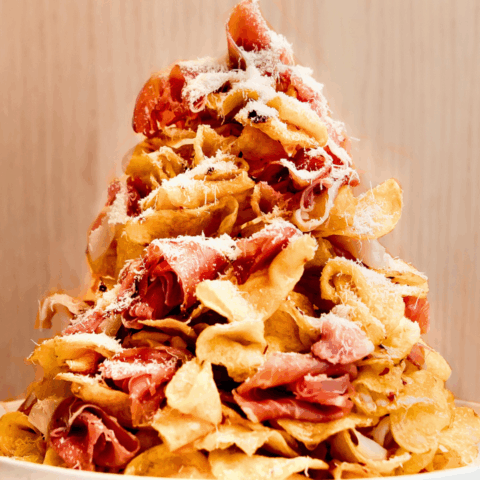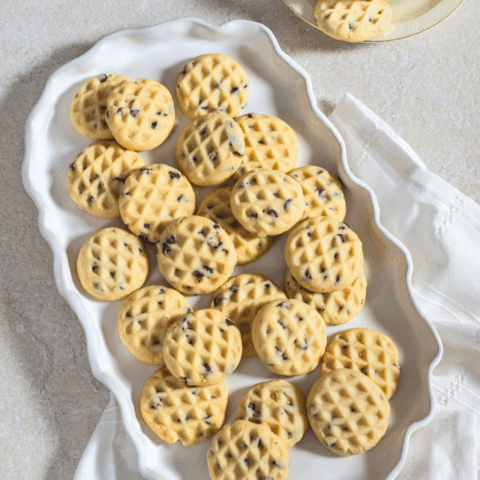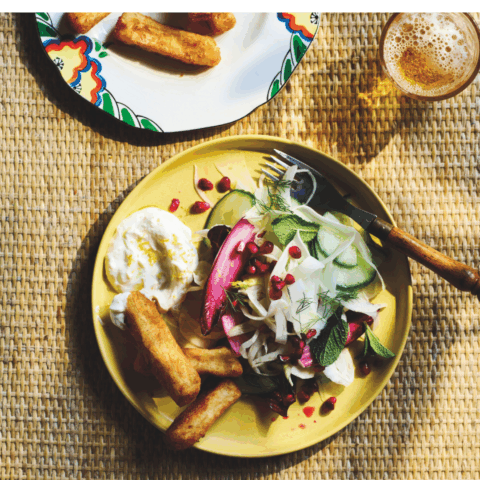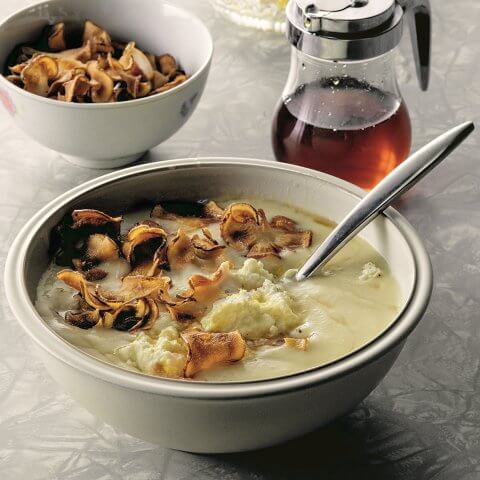Traditional pad Thai is quick to make but tedious to prep for. There are a lot of ingredients, some of which aren’t pantry staples even for Thai people. But that’s because pad Thai is not a dish meant for home cooking – it’s something most people buy. But I wondered, what is the “minimum viable pad Thai”? How much can I simplify it and still have it taste great and proudly be called pad Thai? This is it right here. Faster, simpler, but still tastier than takeout. What I have removed are the dried shrimp, pressed tofu and sweet preserved radish, and I’ve also provided a quick-soak method for the noodles. Everything that’s left I consider important, but the peanuts can go if you can’t eat them. –Palin Chongchitnant
Easy quick-soak method for rice noodles
For quick-soak noodles, submerge them in hot off-the-boil water for 3 minutes, then immediately drain and rinse under cold water. If you have time, soak the noodles for 1 hour in room temperature water and then drain; you can do this in advance and keep them in an airtight container in the fridge for up to 3 days. This timing is for medium-size Erawan-brand rice noodles; you may need to adjust if using a different brand.
Garlic chives are a key ingredient in Pad Thai
Garlic chives are available at most Asian grocery stores. If you can’t find the dark-green ones, look for yellow ones. In a pinch, 2-3 green onions will work instead, but chop them smaller, as they are stronger-tasting.
For Pad Thai, make sure to stir-fry the noodles in batches of two servings
Crowding the pan, especially with a low-BTU home stove, can result in soggy noodles because steam gets trapped under all the food and your noodles end up simmering in liquid longer than they should. If you’ve got a powerful stove and a large wok, you may be able to get away with a larger batch, so use your judgment here. You can also try reducing the amount of water in the sauce, or omitting it altogether, if you feel like you might be crowding the pan.
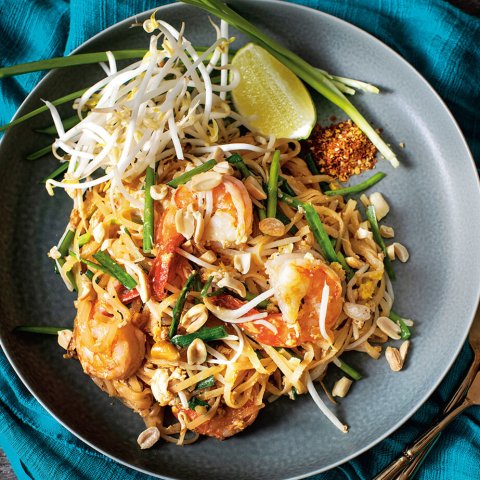
Simple Pad Thai
Ingredients
Sauce
- 3 tbsp + 1 tsp finely chopped palm sugar packed
- 3 tbsp water
- 4 tbsp tamarind paste
- 2 tbsp fish sauce
Pad Thai
- 4 oz (115 g) dried rice noodles medium size, rehydrated (see note #1)
- 3-4 tbsp neutral oil
- 8-10 medium to large shrimp about 21/25 count, peeled, deveined and patted dry
- 5 cloves garlic chopped
- ⅓ cup thinly sliced shallots
- 2 large eggs
- 2½ cups bean sprouts
- 8-10 stalks garlic chives cut into 2-inch (5 cm) pieces (see note #2)
- ¼ cup unsalted roasted peanuts coarsely chopped, divided
- ½ lime cut in wedges
- roasted chili flakes optional
Instructions
Sauce
- Melt the sugar in a small pot over medium-high heat. Once melted, let it cook for a bit longer, until the colour becomes a deeper caramel but not quite dark brown. Once this colour is achieved, immediately add the water; it will splatter aggressively and the sugar will harden. Turn the heat down to medium and swirl it around until most of the sugar is dissolved.
- Turn off the heat and stir in the tamarind paste and fish sauce. Don’t worry about a few stubborn chunks of sugar; they’ll have dissolved by the time you need the sauce.
Pad Thai
- Using scissors, cut the soaked noodles roughly in half so it’s easier to mix them with the veggies. Place all your prepped ingredients by the stove, ready to go.
- Place a wok or large nonstick skillet on high heat and pour in just enough oil to coat the bottom. Once the oil is very hot, lay the shrimp down in one layer and let them sear without moving them until at least halfway cooked, about 2 minutes. Flip and cook on the other side until they are done. Turn off the heat and transfer the shrimp to a bowl, leaving all the oil and any juices behind.
- Add a bit more oil to the pan if needed so that you have about 3 tbsp. (Having enough oil is important to make sure that the noodles don’t clump together.)
- Add the garlic and shallots and turn the heat to medium. Stir until the shallots are translucent, about 2 minutes.
- Turn the heat up to the hottest it can go and add the noodles and sauce (see note #3). Toss together until most of the sauce has been absorbed. At this point it will look like there aren’t nearly enough noodles, but don’t panic, the dish will bulk up with the veggies and proteins.
- Push the noodles to one side of the pan to create space for the eggs, then break the eggs into the pan. Scramble slightly just to break the yolks, then move the noodles on top of the eggs and let the eggs continue to cook for another 30 to 45 seconds, until they are mostly cooked. Flip the noodles and then toss to break up the eggs.
- Give the noodles a quick taste to check their doneness. If they’re too chewy, add a splash of water and keep tossing for 1 minute or so to allow the water to absorb.
- Add the shrimp back to the pan, along with any juices, and toss to mix. Turn off the heat and add the bean sprouts, garlic chives and half of the peanuts. Use tongs to mix just until everything is evenly distributed. Plate immediately – you want the bean sprouts to be as fresh as possible, so don’t let them linger in the hot pan unnecessarily.
- Top with the remaining peanuts and serve with wedges of lime. Add some roasted chili flakes for heat, if desired.
Notes
- For quick-soak noodles, submerge them in hot off-the-boil water for 3 minutes, then immediately drain and rinse under cold water. If you have time, soak the noodles for 1 hour in room temperature water and then drain; you can do this in advance and keep them in an airtight container in the fridge for up to 3 days. This timing is for medium-size Erawan-brand rice noodles; you may need to adjust if using a different brand.
- Garlic chives are a key flavour in pad Thai and they’re available at most Asian grocery stores. If you can’t find the dark-green ones, look for yellow ones. In a pinch, 2-3 green onions will work instead, but chop them smaller, as they are stronger-tasting.
- For pad Thai I recommend you stir-fry the noodles in batches of two servings. Crowding the pan, especially with a low-BTU home stove, can result in soggy noodles because steam gets trapped under all the food and your noodles end up simmering in liquid longer than they should. If you’ve got a powerful stove and a large wok, you may be able to get away with a larger batch, so use your judgment here. You can also try reducing the amount of water in the sauce, or omitting it altogether, if you feel like you might be crowding the pan.


